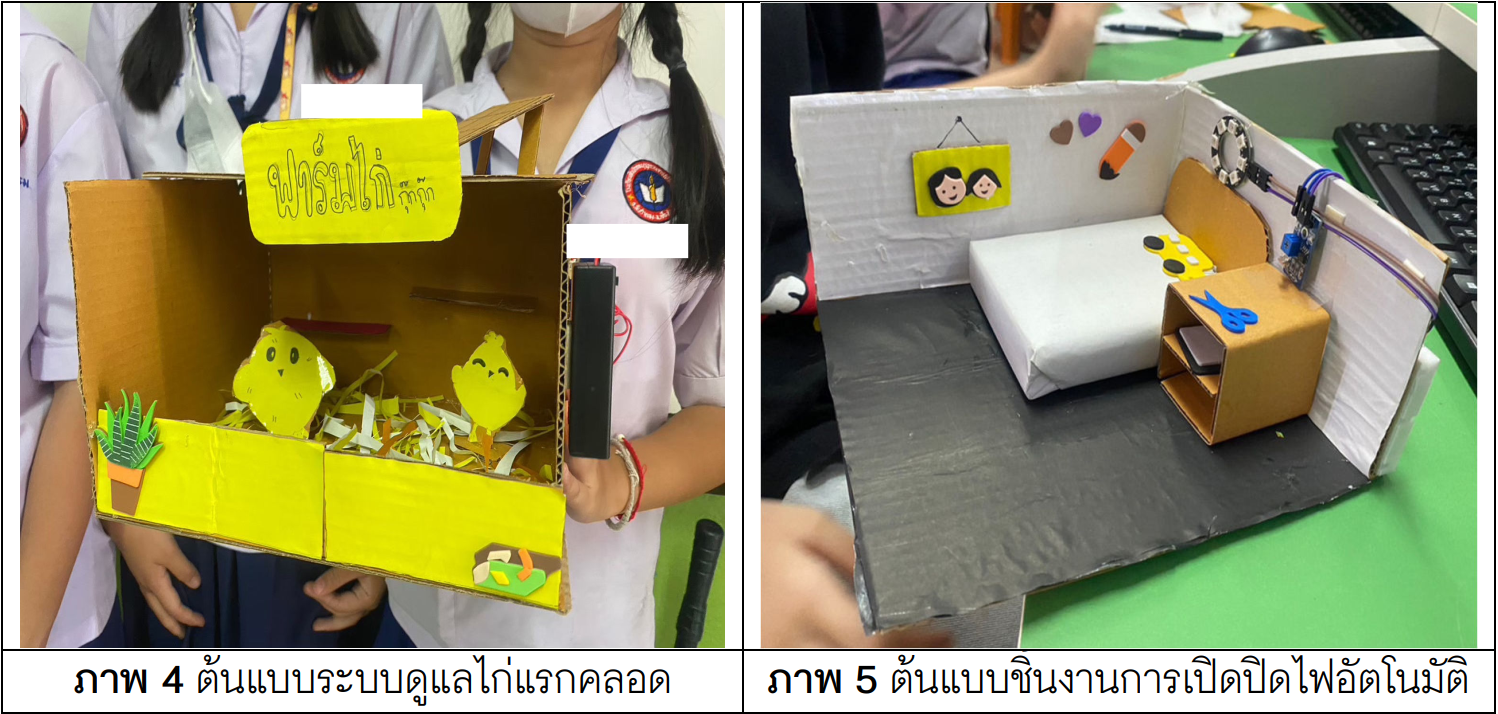Development of Prototype of Coding Instructional Management in the Digital Age for elementary school students: Application of UX Research
Keywords:
Instructional Management, Coding, UX ResearchAbstract
Coding instructional management has been proven effective in enhancing several skills among learners, particularly systematic thinking, which is crucial for careers in the digital age. This research aimed to 1) analyze the experiences and needs of teachers regarding coding instructional management using user experience (UX) research, 2) develop a prototype for coding instructional management designed to enhance systematic thinking based on the results of the UX research, and 3) analyze the effectiveness of the prototype in improving learners’ systematic thinking skills, as well as gather perspectives from teachers and students on coding instructional management. The target group included teachers at a school with experience in managing coding instruction at the primary level, and primary students at the same school. Data analysis involved descriptive statistics and content analysis. The results were as follows: Teachers struggled to manage activities that would help students develop products addressing surrounding problems. There was minimal exchange of information regarding learning management among teachers, and the coding instructional management process was unclear. Regarding the needs for coding instructional management, teachers required guidance on introducing concepts and procedures for integrating surrounding problems into learning activities, as well as clear steps for managing learning. Teachers also needed to develop competencies for managing coding instruction. The prototype for coding instruction consisted of four units: Unit 1 focused on analyzing problems and finding solutions, Unit 2 on writing flowcharts, Unit 3 on writing programs to control operations, and Unit 4 on developing artifacts. The entire process lasted 28 periods. After implementing the prototype, students' systematic thinking skills improved. They were able to develop products that could be used to solve surrounding problems. Teachers had a positive attitude toward the prototype, believing it was effective in developing students and could be applied in actual coding instruction. Students also had a positive attitude towards coding instructional management, expressing that they liked and enjoyed the activities.
References
กระทรวงศึกษาธิการ (2562). Coding สร้างคนสู่ศตวรรษที่ 21. ข่าวกระทรวงศึกษาธิการ. สืบค้นจาก https://www.moe.go.th/moe/th/news/index.php?Key=news_Surachet
ธนาภา งิ้วทอง (2560). การประยุกต์ใช้การวิจัยประสบการณ์ผู้ใช้และการวิจัยอิงการออกแบบเพื่อพัฒนาต้นแบบการส่งเสริมการเรียนรู้ด้านการวิจัยแบบร่วมมือของครู [วิทยานิพนธ์ครุศาสตรมหาบัณฑิต จุฬาลงกรณ์มหาวิทยาลัย]. CUIR. https://cuir.car.chula.ac.th/bitstream/123456789/60223/
Arnold, R. D., & Wade, J. P. (2015). A definition of systems thinking: A systems approach. Procedia Computer Science, 44, 669-678. https://doi.org/10.1016/j.procs.2015.03.050
Dick, W., Carey, L., & Carey, J. O. (2009). The systematic design of instruction. Pearson.
Grover, S., & Pea, R. (2013). Computational thinking in K–12: A review of the state of the field. Educational Researcher, 42(1), 38–43. https://doi.org/10.3102/0013189X12463051
Health Systems DDLabs. (2019). คิดครบ คิดลึก คิดยาว ชุดเครื่องมือของนักคิดเชิงระบบ. Ramathibodi Health Systems Design and Health Policy Decision Laboratories. http://systemsdd.co/intro-to-systems-thinking/systems-thinking-tools/
Hassenzahl, M., & Tractinsky, N. (2006). User experience-a research agenda. Behavior & Information Technology, 25(2), 91-97.
Resnick, M., Maloney, J., Monroy-Hernández, A., Rusk, N., Eastmond, E., Brennan, K., & Silverman, B. (2009). “Digital fluency” should mean designing, creating, and remixing, not just browsing, chatting, and interacting: Programming for all. Communications of the ACM, 52(11), 60–67. https://doi.org/10.1145/1592761.1592779
Gardner, H. (1993). Frames of mind: The theory of multiple intelligences. Basic Books.
Grover, S., & Pea, R. (2013). Computational thinking in K–12: A review of the state of the field. Educational Researcher, 42(1), 38–43. https://doi.org/10.3102/0013189X12463051
Kujala, S., Roto, V., Vaananen-Vainio-Mattila, K., Karapanos, E., & Sinnela, A. (2011). US curve: A method for evaluating long-term user experience. Interacting with Computers, 23(5), 473-483.
Meadows, D. H. (2008). Thinking in systems: A primer. Chelsea Green Publishing.
Vasilescu, B. (2018). Learning JavaScript data structures and algorithms: Understand and implement classic data structures and algorithms using JavaScript. Packt Publishing.
Senge, P. M. (2006). The fifth discipline: The art and practice of the learning organization. Currency.
Stern, C. (2014, September 25). CUBI: A user experience model for project success. https://uxmag.com/articles/cubi-a-user-experience-model-for-project-success.
Sweeney, L. B. (1999). Guidelines for daily systems thinking practice. Pegasus Communication.
Translated Thai References
Ministry of Education (2019). Coding: Shaping People for the 21st Century. Ministry of Education News. Retrieved from https://www.moe.go.th/moe/th/news/index.php?Key=news_Surachet
Ngewtong, T. (2017). Application of UX research and design-based research to develop a prototype of teachers’ collaborative research learning enhancement [Master’s thesis, Chulalongkorn University]. CUIR. https://cuir.car.chula.ac.th/bitstream/123456789/60223/1/5983378127.pdf
Health Systems DDLabs. (2019). Think Thoroughly, Think Deeply, Think Long-term: A Toolkit for Systems Thinkers. Ramathibodi Health Systems Design and Health Policy Decision Laboratories. http://systemsdd.co/intro-to-systems-thinking/systems-thinking-tools/

Published
Versions
- 2024-11-21 (3)
- 2024-10-16 (2)
- 2024-08-31 (1)
How to Cite
Issue
Section
License
Copyright (c) 2024 Natthapol Jaengaksorn, Pitsanu Rodkomin

This work is licensed under a Creative Commons Attribution-NonCommercial-NoDerivatives 4.0 International License.

